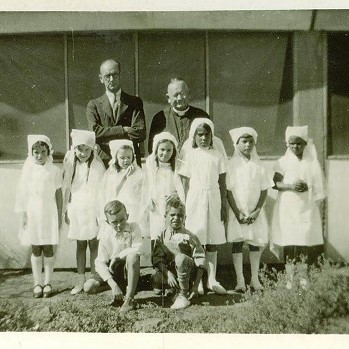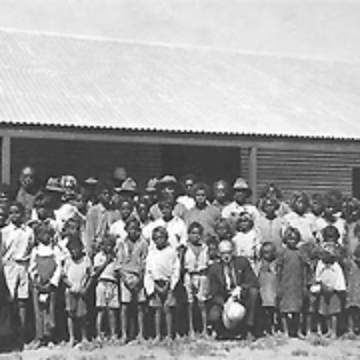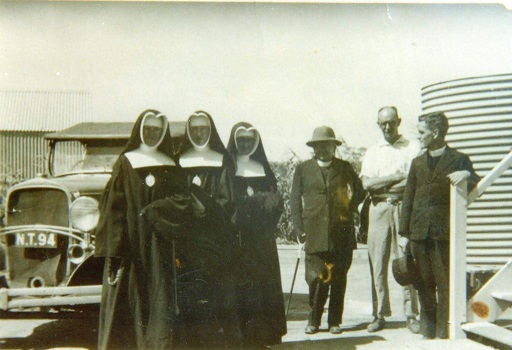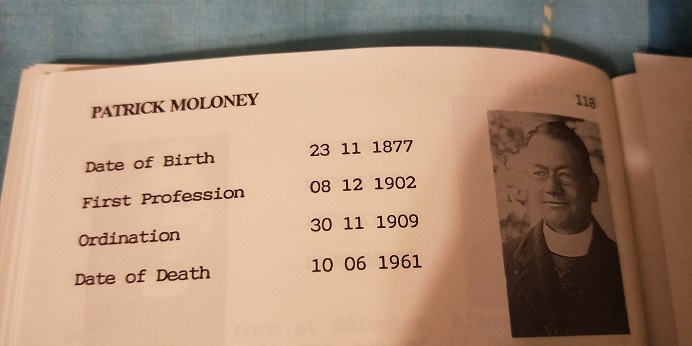Patrick Moloney MSC, 60th Anniversary of his death, his heritage in Central Australia.

Here is something of that Central Australian history. An excerpt from: Francis McGarry and the ‘Little Flower Black Mission’: encounters of a Catholic lay missionary with Indigenous people of Central Australia 1935–1944. (By Charmaine Robson)
In 1935, in accordance with Gsell’s request, the MSC Sydney province sent Father Patrick Moloney to Alice Springs to open
a mission station in Central Australia. Frank joined him shortly afterwards as
a lay assistant. His exact steps in pursuit of this new vocation are unknown,
but Gsell’s speech was no doubt influential. Frank’s letters repudiate any
suggestion of his volunteering for the work; the decision, he implied, was
God’s: “I did not come up here of my own will as when Father Perkins [MSC
Provincial Superior] asked me if I would go to Alice Springs, I asked for
three days to think it over. On revisiting him I remarked that I had not made
up my mind but if he thought it God’s will, then I would willingly go”.

Looking for Mission
In March 1935, Frank arrived in Alice Springs to take up residence with
parish priest, Father Moloney, at the Catholic presbytery. In his history of
the Australian province of the MSC, Father Antony Caruana explains that
Moloney was a major force in shifting the Order’s priorities from overseas
mission work towards the Aboriginal apostolate from the late 1920s.
Moloney’s enthusiasm ultimately outweighed his superiors’ reluctance
to expose their men to the harsh living conditions and isolation of remote
Australia.16 Furthermore, like Gsell, Moloney believed Catholics had a responsibility
to redress the wrongs inflicted on Aboriginal people through colonisation.
For him, evangelisation was part of the solution.
Prior to Alice Springs, Moloney established missions at Palm Island
(1931) and Menindee (1933). He was fifty-eight and walked with a cane, and,
by his own admission, was neither strong nor in good health. Nonetheless,
he was resolute and excited about starting this third mission. Frank, twenty
years his junior and physically fit, could do the manual jobs, domestic chores
and drive the car. Both men also clearly expected that Frank would also play
a part in the main work of the mission: Christianising and giving material aid
to the Aboriginal people.

Moloney’s original plan for the mission was to seek Aboriginal people
who’d had little contact with Europeans. In his view, they had the best
chance of becoming successful Catholic converts, having avoided the vices
and immorality he associated with the undesirable Australian way of life.
He and Frank made two long, hazardous expeditions by car into the desert
to this end, but returned each time, their hopes dashed. On 3rd October 1935,
Moloney proposed that they “go out and look for blacks” in closer proximity
to the town.19 In a camp on the edge of town they met a group of Eastern
Arrernte people, including Brandy McMillan and his family. Frank’s letters
state they were amenable to the prospect of a mission for their children, and
that some asked Moloney to baptise them immediately, to which he agreed
Moloney and Frank ascribed particular significance to the founding
date of the mission, since it was the Feast Day of St Therese of Lisieux,
known also as ‘Little Flower’. St Therese had been canonised only a decade
earlier and enjoyed immense popularity in this period, notably among the
Catholics of Adelaide, Moloney’s home city. As a pious woman whose short
life consisted simply of prayer and work, she became a symbol of enduring
faith in an increasingly secular society, and was known for her generous
bestowal of miracles. Moloney and Frank believed her intercession had
brought about their mission, and they named it Little Flower, accordingly.
Furthermore, Moloney believed that St Therese had meant the Mission to be
Frank’s, not his, as officially it had to be. In early 1936, he informed Frank,
“She got me to baptise then only because it was not your office to baptise.
But the mission is yours and will remain yours for many a long day I hope.”
